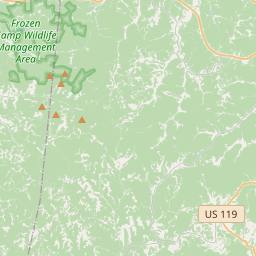U. S. Civil War
Historical marker location:






1861 1865
April 12, 1861: The Civil War begins with the Confederate attack on Fort Sumter, located in South Carolina's Charleston Harbor.
April 15, 1861: President Abraham Lincoln issues a call for 75,000 volunteers to serve in the Union Army to suppress the rebellion.
May 24, 1861: The first major land battle, known as the First Battle of Bull Run (or First Battle of Manassas), takes place in Virginia. It ends in Confederate victory.
September 17, 1862: The Battle of Antietam in Maryland becomes the bloodiest single-day battle in American history, with heavy casualties on both sides. The Union forces, commanded by General George McClellan, manage to halt Confederate General Robert E. Lee's advance into Union territory.
January 1, 1863: President Lincoln issues the Emancipation Proclamation, declaring that all slaves in Confederate-held territories are to be set free. However, the proclamation does not immediately free all slaves in the United States.
July 1-3, 1863: The Battle of Gettysburg in Pennsylvania takes place, resulting in a significant Union victory and inflicting heavy casualties on Confederate forces. It marks a turning point in the war.
November 19, 1863: President Lincoln delivers the Gettysburg Address, emphasizing the principles of liberty, equality, and the preservation of the Union.
April 9, 1865: General Robert E. Lee surrenders to Union General Ulysses S. Grant at Appomattox Court House in Virginia, effectively ending the Civil War.
April 14, 1865: President Lincoln is assassinated by John Wilkes Booth while attending a play at Ford's Theatre in Washington, D.C.
May 10, 1865: Confederate President Jefferson Davis is captured, signaling the collapse of the Confederate government.
December 6, 1865: The Thirteenth Amendment to the United States Constitution is ratified, officially abolishing slavery throughout the country.
While this timeline provides an overview of key events, it is important to note that the Civil War spanned over four years, from 1861 to 1865, and encompassed numerous battles, campaigns, and political developments that shaped the course of American history.
More history nearby
The West Virginia University Mountaineers football team played the first ever college football night game in 1892. The game was played under electric lights at the Mountaineer Field in Morgantown.
European settlers began moving into the area in the late 18th century, and the county was officially established in 1856. The county was named after Spencer Roane, a prominent Virginia jurist and politician. Roane County quickly became known for its flourishing agriculture and timber industries, thanks to the fertile land and abundant forests.
During the American Civil War, Roane County experienced divisions like many other regions in West Virginia. While the majority of residents were pro-Union, there were also Confederate sympathizers. The county saw several skirmishes and raids, including the Battle of Spencer in 1863, when Confederate forces temporarily occupied the county seat.
In the years following the war, Roane County continued to develop and grow. The timber industry became a major economic driver, with numerous sawmills and logging operations springing up across the county. Coal mining also became an important industry, particularly in the early 20th century. Throughout its history, Roane County has faced various challenges, including economic fluctuations and natural disasters. However, its resilient residents have always found ways to adapt and persevere, making it the thriving community it is today.
Roane County Timeline
This timeline provides a condensed summary of the historical journey of Roane County, West Virginia.
- 1762 - Roane County was created by an act of the Virginia General Assembly.
- 1861-1865 - During the American Civil War, Roane County was located in the Confederate state of Virginia.
- 1872 - Spencer was chosen as the county seat of Roane County.
- 1896 - A devastating fire destroyed much of Spencer, including the county courthouse.
- 1900 - The county courthouse was rebuilt after the fire.
- 1942-1945 - Roane County contributed significantly to the war effort during World War II.
- 1969 - The first West Virginia State Folk Festival was held in Spencer.
- 1979 - The Mercury Radio Theater massacre occurred in Roane County, where three members of the band were murdered.
- 1997 - The Upper Big Branch mine explosion in Roane County resulted in the deaths of 29 miners.